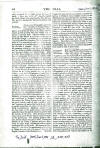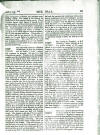

|
Unsigned Review of The Psychology of Suggestion (1898) THE DIAL, June 1, 1898, 24, 358-359. |
Man is a suggestible animal, says Dr. Boris Sidis, in his recent volume on "The Psychology of Suggestion" (Appleton); and this means that he is largely influenced, in his opinions, his feelings, and his actions, by other forces than those which make up his own inward individuality. Consciously and unconsciously, he receives suggestions from his fellow men, from his environment, from the constituted order of things which is part of his heredity. The psychology of the mode of action of these varied processes of suggestion is full of interest, and Dr. Sidis has made a valuable contribution alike to our general knowledge of suggestible conditions and to the proper explanation and statement of the relations of these states to our mental life. While the main interest centres in the increased and somewhat abnormal suggestibility which characterizes the hypnotic condition, and this volume is therefore mainly concerned with hypnotism, it is well to emphasize the existence of normal suggestibility. This is well done by Dr. Sidis, by special experiments made upon normal persons, and again by considerations of social suggestion—of the forces that sway the crowd in a mob. The street fakir or the shrewd political speaker may present the normal side of crowd suggestibility; the contagious panic of fear, the religious epidemics, commercial crises, or intellectual fads, represent various types of unusual of abnormal "crowd" action, in all of which suggestion is an important factor. It is of great practical importance that these influences should be fully understood. The bulk of the volume is concerned with descriptions and explanation—mainly the latter—of the various hypnotic conditions, with the hope of shedding light upon the true psychological differences which separate the hypnotic from the normal waking consciousness. The solution is found in the theory of a dissociation or disaggregation of groups of mental elements, so that a part of our subconscious self is split off from the rest and acts in apparent separation from our normal personality. This subconscious self comes to the surface in all forms of hypnotic conditions, and produces many startling results. The theory is not without its merits, but Dr. Sidis carries rather too far. There is a point beyond which figures of speech do not aid explanations, and theoretical assumptions interfere with rather than promote helpful experimentation. Dual personality as an unusual mental phenomenon is interesting and worthy of record; it cannot as yet be wisely used as a source of explanation of more common conditions. This portion of the volume will be too technical for the general reader, and is most likely to be questioned by the professional reader. The remainder of the book may be highly commended as an able and interesting contribution to the nature of suggestion and its practical importance.